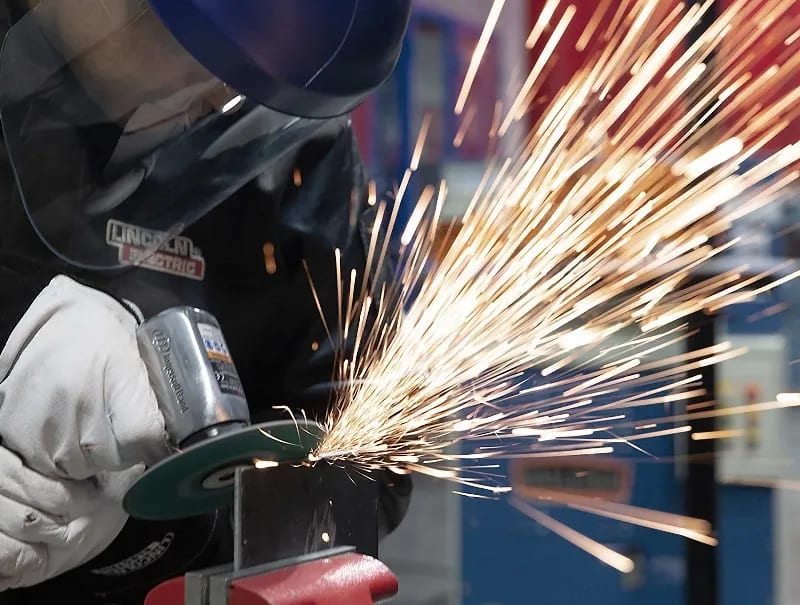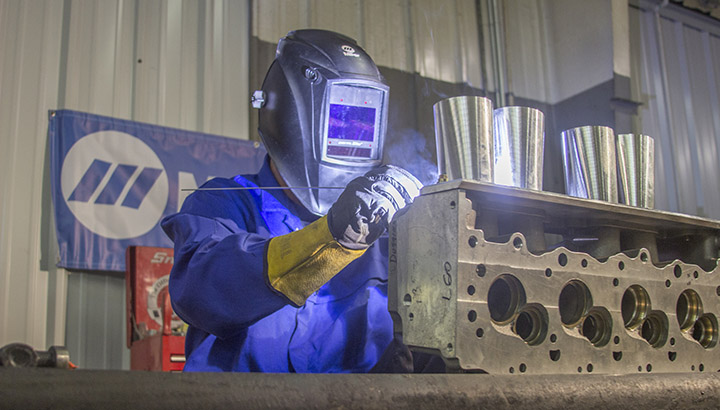All About Welding: Key Insights Into Techniques and Finest Practices for Success
Welding incorporates a selection of techniques, each matched for particular materials and applications. Understanding these approaches, such as GMAW, SMAW, and TIG, is important for accomplishing perfect results. The right tools and security practices can not be neglected. As prep work and fixing play vital functions in the welding process, mastering these components can significantly improve the quality of the end product. What are the key variables that ensure a successful weld?
Recognizing Different Welding Techniques
Welding strategies incorporate a range of methods, each matched to certain applications and materials. Amongst the most typical techniques are Gas Steel Arc Welding (GMAW), Protected Metal Arc Welding (SMAW), and Tungsten Inert Gas Welding (TIG) GMAW, additionally called MIG welding, is prominent for its rate and convenience, making it ideal for slim materials. SMAW, or stick welding, is preferred for its simplicity and performance in outdoor settings, especially with thicker steels. TIG welding uses precision and control, making it ideal for elaborate work and non-ferrous steels (Montana Mobile Welding and Repair Fabrication). Each method has its unique advantages and factors to consider, allowing welders to choose the most effective approach based upon the task's requirements, material type, and wanted outcomes. Comprehending these strategies is necessary for successful welding
Necessary Welding Devices and Devices
While different welding methods need particular skills, the best tools and devices are equally vital for attaining top quality outcomes. Crucial welding devices includes welding machines, which vary depending upon the strategy-- such as MIG, TIG, or stick welding. Safety gear, including safety helmets, handwear covers, and aprons, assurances safety and security and convenience during the process. In enhancement, components and clamps assist protect materials in position, guaranteeing precision in welds. Consumables like welding rods, cable, and protecting gas are also important components that affect the top quality of the weld. Devices such as mills and cutters facilitate surface area preparation and post-weld completing, contributing to an expert end result. Purchasing top notch devices ultimately boosts the effectiveness and effectiveness of welding projects.
Safety Practices in Welding
Appropriate safety and security methods are important in the welding market to protect workers from potential hazards. Welders have to put on ideal personal protective devices (PPE), including helmets with correct shading, gloves, and flame-resistant garments. Adequate ventilation is essential to decrease direct exposure to damaging fumes and gases produced throughout the welding procedure. Furthermore, employees must be trained in the correct handling of welding devices to stop crashes. Fire precaution, such as keeping flammable products away from the welding location and having fire extinguishers readily available, are necessary. Normal evaluations of tools and work areas can aid determine potential dangers prior to they result in crashes. By sticking to these safety techniques, welders can create a safer working setting and minimize dangers connected with their profession.
Readying Materials for Welding
Preparing materials for welding is a crucial step that substantially influences the high quality and integrity of the end product (Montana Mobile Welding and Repair Belgrade). Correct preparation involves cleaning the surfaces to get rid of contaminants such as dust, oil, and rust, which can compromise the weld. Strategies such as grinding, fining sand, or using solvents are generally used to attain a tidy surface. In addition, making certain that the materials mesh comfortably is necessary; voids can cause weak welds. It's additionally essential to consider the alignment and positioning of the components, as this will certainly influence the simplicity of welding and the final end result. Selecting the ideal filler material and making sure compatibility with the base metals is crucial for attaining strong, durable welds.
Tips for Getting High-Quality Welds
Attaining high-quality welds requires attention to detail and adherence to best practices throughout the welding process. Appropriate joint preparation is important, guaranteeing surface areas are clean and cost-free from pollutants. Choosing the appropriate filler material and welding strategy based upon the base steels is critical for suitable bonding. Maintaining consistent travel rate and angle while welding can stop defects and advertise harmony. Furthermore, managing heat input is essential; excessive warm can cause warping and damaged joints. If necessary, on a regular basis examining the welds throughout the procedure allows for immediate adjustments. Lastly, utilizing suitable post-weld treatments, such as cleansing and tension alleviation, can improve the durability and honesty of the weld, ultimately making certain an effective end result.
Fixing Typical Welding Issues
Welding commonly provides challenges that can affect the top quality and stability of the end product. Usual issues such as porosity, irregular weld beads, and overheating can develop, each needing certain fixing methods. Recognizing these issues is vital for welders to improve their abilities and accomplish perfect outcomes.
Porosity Issues Explained
Porosity can usually be overlooked, it remains an essential problem in welding that can jeopardize the integrity of an ended up product. Porosity describes the presence of tiny gas pockets within the weld bead, which can lead and compromise the joint to early failure. This issue normally arises from pollutants, wetness, or inappropriate protecting gas protection throughout the welding procedure. To alleviate porosity, welders should confirm that the base products are dry and tidy, utilize ideal shielding gases, and maintain consistent welding specifications. Regularly evaluating the equipment and environment can additionally aid identify prospective concerns prior to they show up in the weld. Dealing with porosity successfully is essential for see page accomplishing strong, resilient welds that satisfy high quality standards.

Inconsistent Weld Beans
Inconsistent weld grains can greatly impact the top quality and stamina of an ended up product. Different aspects contribute to this problem, including improper travel rate, wrong amperage setups, and irregular electrode angles. When the welder moves also swiftly, a bead might show up narrow and do not have infiltration, while moving too slowly can create excessive accumulation. Furthermore, using the wrong amperage can result in either damaging or too much spatter, both of which compromise weld stability. The welder's technique, such as inconsistent torch movement, can additionally bring about unequal grain appearance. To alleviate these problems, welders should concentrate on preserving consistent, controlled activities and making certain correct tools setups to attain harmony in their welds. Consistency this content is essential to accomplishing strong and reputable welds.
Overheating and Bending Issues
Extreme warmth throughout the welding procedure can cause substantial overheating and warping problems, affecting the structural honesty of the workpiece. These issues commonly manifest as distortion, which can compromise positioning and fit-up, making further setting up challenging. Elements adding to overheating include the selection of welding specifications, such as voltage and take a trip rate, as well as the sort of material being bonded. To minimize these problems, welders should keep consistent traveling speed and proper warmth input while keeping an eye on the work surface temperature level. Furthermore, preheating or post-weld heat treatment can help ease stress and anxieties triggered by fast air conditioning - Montana Mobile Welding and Repair Welding. Normal assessment and adherence to finest methods are necessary in avoiding getting too hot and making certain the long life and integrity of welded frameworks
Regularly Asked Concerns
What Are the Career Opportunities in the Welding Industry?
The welding market provides diverse profession opportunities, consisting of placements as welders, teachers, inspectors, and engineers. Experts can work in production, click to read more building and construction, aerospace, and auto sectors, gaining from solid need and affordable incomes in different roles.
Exactly How Can I Improve My Welding Speed Without Compromising Top Quality?
To enhance welding speed without sacrificing quality, one must exercise efficient techniques, maintain devices, enhance setups, and improve hand-eye coordination. Normal training and seeking comments can also substantially add to attaining much faster, high-grade welds.
What Accreditations Are Offered for Welders?
Various certifications exist for welders, including those from the American Welding Society (AWS), the National Facility for Construction Education and Research Study (NCCER), and different industry-specific organizations. These credentials improve employability and demonstrate ability efficiency.
How Does Welding Impact the Features of Metals?
Welding affects the properties of steels by modifying their microstructure, which can bring about modifications in solidity, ductility, and toughness. Warmth input and air conditioning rates during the procedure greatly influence these material qualities.
Can I Weld Dissimilar Metals Together?
